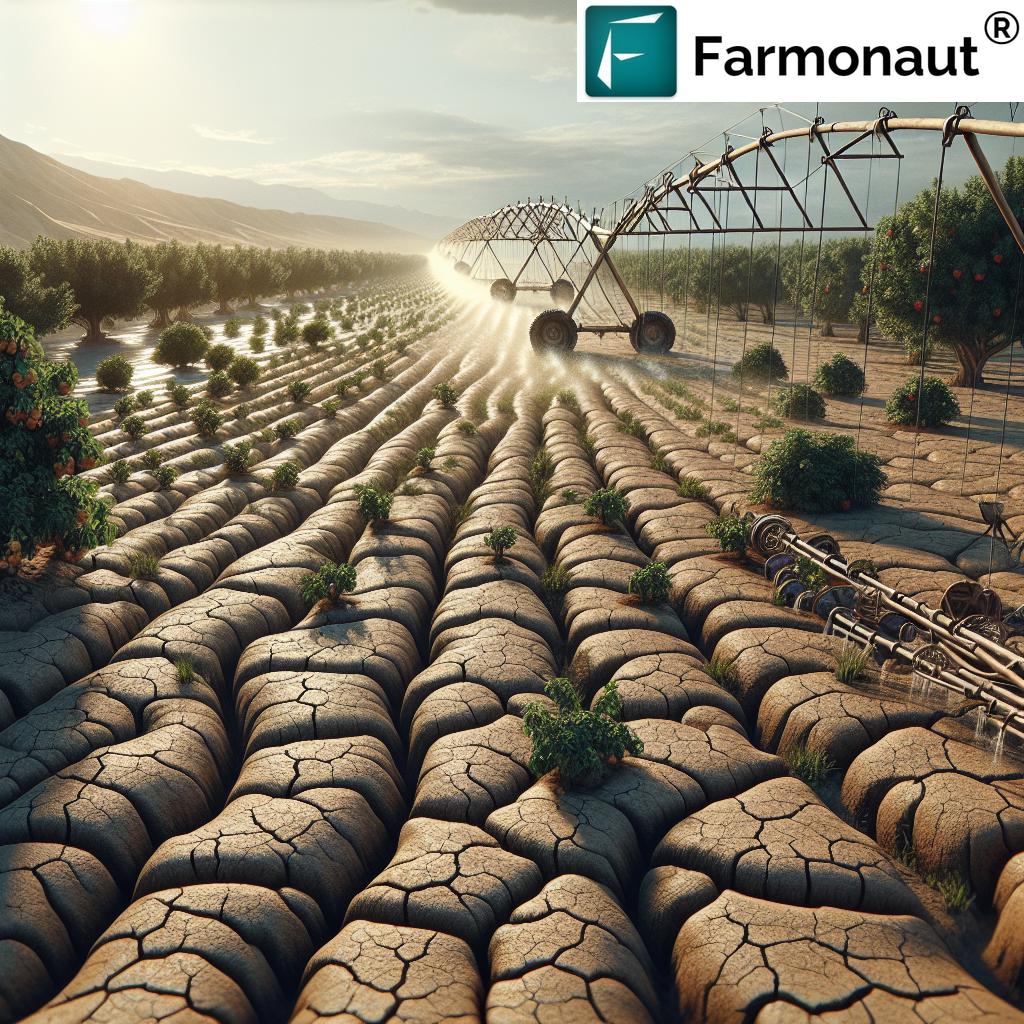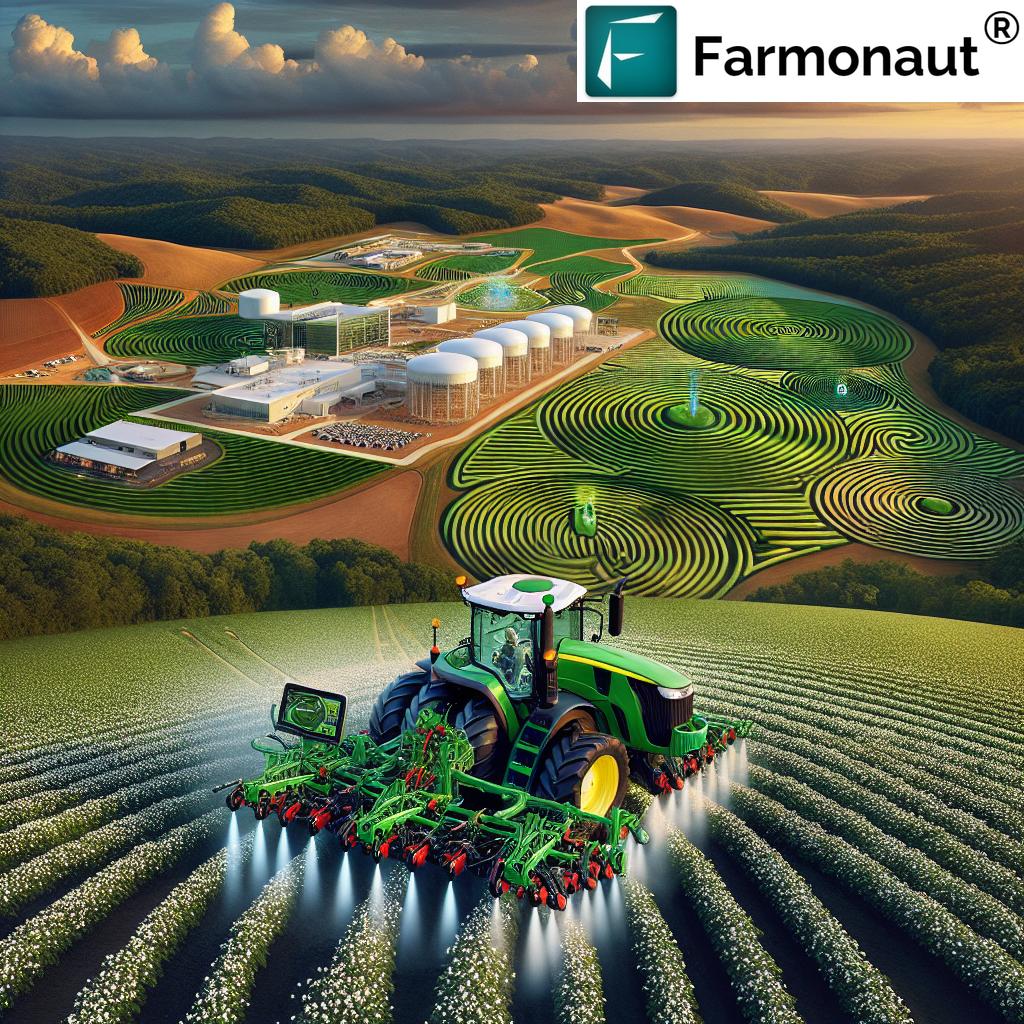Drought Impact on Grand Valley Orchards: 7 Powerful Water Solutions
“Over 70% of Grand Valley orchards face reduced yields due to persistent drought and limited irrigation resources.”
Introduction: The Urgency of Drought in Grand Valley
As we navigate one of the driest years on record in the Grand Valley, the impact of persistent drought in the west is more apparent than ever. Grand Junction, Palisade, and surrounding areas have witnessed a dramatic lack of soil moisture, with significant consequences for our prized wineries, orchards, and all who depend on crop irrigation for their livelihoods.
According to coverage by KKCO (Grand Junction), deeper layers of soil in our region are especially dry—far more than what is typical for this time of year. As a direct result, farmers are rapidly having to adapt their irrigation systems, spending more money on labor, water, and maintenance, all to ensure our plants survive and yields do not diminish further.
In this comprehensive guide, we explore the drought impact on vineyards and orchards, water rights challenges, and innovative water solutions that are helping us build resilience against adapting to low precipitation and unpredictable weather patterns.
Drought Impact on Vineyards & Orchards
Drought in the Grand Valley is far from a theoretical risk—it’s a critical reality. As owners, managers, and workers of wineries and orchards, we’ve experienced firsthand the amount of effort it takes to maintain viable crops under extreme drought.
The soil in the Palisade region, especially in deeper layers (up to 25 feet down), is much drier than in previous years. With surface precipitation offering little to no relief, conventional moisture is nearly unavailable, forcing us to seek adaptive solutions.
As Ron West, owner and manager of Varaison Vineyards and Winery, asserts: “We are in an extreme drought out here. We don’t see any relief from surface precipitation. And so we’re beginning a program of flood irrigation to get the hydration back into the soil column down to 25 feet.”
The impact is not just agricultural; it is also economic. We’ve consistently had to double the amount of water used to make up for the lack of moisture in the soil—a pressure that trickles down to our spending, labor costs in irrigation, and eventually, the cost and availability of our products.
Water Rights Issues in the West: Senior vs Junior Holders
Water rights are the backbone of agriculture in the west, dictating who can access crucial river and surface flows. In regions like Grand Junction, much of our ability to irrigate hinges on whether we hold senior or junior rights. Those with senior rights, like Ron West, often receive their allocation first—leaving junior water rights holders at risk during drought or scarcity.
- Senior Water Rights: Priority access to river water; less immediate concern during early-stage drought.
- Junior Water Rights: Vulnerability to water calls; face dramatic change during periods of shortage, potentially losing access entirely if more senior users need more water.
As the Colorado River table decreases and surface precipitation wanes, more stakeholders may “put the call on water”—meaning upstream users must halt their usage to serve downstream, senior rights first. This can change farm operations dramatically and create lasting issues for latecomer orchardists and vineyards.
Farmonaut’s blockchain-based traceability system can bring transparency to water use compliance and reporting, helping demonstrate water stewardship to stakeholders and regulatory authorities.
Soil Moisture Management in Palisade: Adaptive Approaches
The hallmark of sustainable farming amidst drought impact on vineyards and orchards is effective soil moisture management. As reported in Palisade, some areas are “much drier than what they typically are for this time of year.” Digging deeper, we now see that moisture levels often lack below root zones—placing tremendous stress on plants and root systems.
“We’re actually recently planted a conservation crop here, and the goal behind a conservation crop is that it builds a root structure that acts as a sponge that can retain water,” shares Mateo, orchard manager at Early Morning Orchard. This highlights the value of adaptive soil management—using cover crops, organic amendments, and technology to increase water holding capacity for drought periods.
- Root Structure for Water Retention: Deep-rooted species create natural “water storage” in the soil column—vital for mitigating the need to double water use.
- Soil Monitoring: Understanding real-time moisture at various depths, especially in Palisade‘s sandy or rocky soils, guides targeted irrigation.
- Technology: Modern platforms, like Farmonaut’s large-scale farm management app, empower orchardists with satellite-based insights on moisture, crop health, and predictive analytics for irrigation scheduling.
“Implementing adaptive soil moisture management can improve water efficiency in orchards by up to 30% during drought conditions.”
7 Powerful Water Solutions for Grand Valley Orchards Facing Drought
To combat the severe drought affecting orchards, vineyards, and wineries in the Grand Valley, we outline seven actionable solutions proven to enhance resource efficiency, reduce expenses, and protect crops:
-
Flood Irrigation Program
By strategically flooding sections of orchard, moisture can be returned deeper into the soil column. This program is best timed and managed with real-time monitoring and historical weather data.
-
Adaptive Drip Irrigation Systems
Precision irrigation systems for orchards, using drippers at the root zone, conserve water while ensuring good hydration. Modern systems can be managed through apps, automating scheduling based on soil moisture.
-
Soil Moisture Monitoring and AI-Based Advisory
Platforms like Farmonaut offer crop health and soil moisture mapping via satellite. This supports smarter irrigation, fertilizer, and pest management, directly enhancing drought relief for farmers.
-
Planting Conservation Crops and Cover Crops
These crops develop complex root structures for water retention, acting as living sponges to retain more moisture and promote overall soil health.
-
Efficient Filtration and Debris Management
The lower water table in the Colorado River means higher debris load, stressing filtration. Regular system cleaning and modern filters reduce labor, money spent, and frequency of clogs.
-
Smart Water Scheduling & Remote Sensors
Wireless sensors in soil zones report real-time moisture, temperatures, and more, supporting optimized scheduling. This cuts both labor and amount of water used over the season.
-
Securing Water Rights and Engaging in Policy
Active engagement in water rights issues and advocacy for equitable allocation help protect our interests as farmers, especially for junior holders facing challenging times.
Each solution requires planning, investment, and consistent monitoring—but when combined, they provide a powerful defense against the intensifying risks of western drought.
Comparative Solutions Impact Table
| Solution Name | Description | Estimated Water Savings (%) | Approx. Cost ($/Acre) | Implementation Timeframe | Suitability (Orchard/Vineyard) |
|---|---|---|---|---|---|
| Flood Irrigation Program | Periodic application of high-volume water to restore deep column moisture | 10–20 | $150–$250 | Seasonal | Both |
| Adaptive Drip Irrigation Systems | Targeted drip lines at the root zone for efficient delivery | 20–40 | $600–$1200 | 2–8 weeks | Both |
| Soil Moisture Monitoring & AI Advisory | Satellite/app-based tracking and recommendations | 10–30 | $25–$40 (subscription) | Immediate | Both |
| Conservation & Cover Crops | Introduces species with deep roots to retain soil moisture | 10–25 | $100–$180 | 6–16 weeks | Orchard |
| Filtration & Debris Management | Improving filter technology and cleaning frequency | 5–10 | $50–$150 | Ongoing | Both |
| Smart Water Scheduling/Remote Sensors | Sensor-driven timing reduces water waste | 15–35 | $250–$700 | 1–6 weeks | Both |
| Securing Water Rights/Policy Advocacy | Legal and participatory processes for water access | N/A | Varies | Ongoing | Both |
Irrigation Systems for Orchards: Adapting to Low Precipitation
As the drought persists and surface precipitation remains low in Grand Junction, Palisade, and the general west, the pressure on our irrigation systems increases. It’s essential that we use technology and best practices to increase efficiency and minimize resource spent.
Core Components of Modern Orchard Irrigation
- Pressure-Compensated Drippers: Deliver uniform amount of water regardless of elevation changes—critical in valley landscapes.
- Automated Smart Controllers: Link with soil moisture data for dynamic schedules, adapting immediately to weather, soil, and crop needs.
- Advanced Filtration: As the colorado river level declines, debris in irrigation canals rises. Upgrading filters and performing system cleaning more frequently prevents costly breakdowns and spent labor.
- Multi-Zone Distribution: Segment orchards by crop type, age, or soil type for adjustable watering—focusing money and water where most needed.
We often have to double the amount of water used for young trees and new plantings, as their root structures do not yet reach deep enough into the soil column to tap remaining moisture.
Farmonaut’s fleet management tools support efficient scheduling and monitoring of irrigation machinery, helping reduce labor and optimize water resource usage on a large scale.
Conserving Water in Agriculture: Best Practices & Digital Tools
Achieving sustainable agriculture in Palisade and the Grand Valley demands a focus on conserving water in agriculture. Growing unpredictability in precipitation, periodic water calls, and tighter margins each year require that we rethink every drop used.
Top Practices for Water Conservation
- Mulching: Organic mulches suppress evaporation and moderate soil temperature, lowering the need to irrigate frequently.
- Zone-Based Watering: Designating drier areas for increased supply, while reducing the amount used in mature, well-rooted sectors.
- Rainwater Capture (where legal): Collecting and storing runoff during rare precipitation events for orchard use.
-
Digital Farm Management: Applications like Farmonaut’s carbon footprinting solution
not only measure emissions but also provide data on irrigation, helping to ensure resources are used as efficiently and sustainably as possible.
The Role of Tech-Based Monitoring
Satellite imagery and AI are no longer luxuries—they’re necessities for water conservation and soil moisture management. With the Farmonaut web or mobile app, we can:
- Identify anomalies indicating excess dryness or leaks
- Receive predictive advisories on when and how much to irrigate
- Document actual water usage for reporting or regulatory compliance
Real-time insights help us cut money spent, reduce labor costs in irrigation, and mitigate losses from over- or under-watering.
For those managing broadacre plantings or complex field layouts,
Farmonaut’s crop plantation and forest advisory features support
landscape-scale conservation planning and adaptive management.
Labor Costs in Irrigation: Managing Expenses in a Drier Year
One of the most overlooked impacts of drought is heightened pressure on labor and finances. The decline in river table forces us to run pumps longer, purchase and replace more filters, and perform system cleaning more frequently. This all results in more money spent and higher per-acre maintenance.
- Debris Management: As described by orchard manager Mateo, “We’re spending money on labor, and the labor is used to clean the system more frequently.” This is an ongoing, unavoidable cost as water quality changes.
- Filter Technology: Investing in advanced filters may increase upfront costs, but pays off in labor saved over the season.
- Automation and Remote Monitoring: Using apps to track pump operation and system health can significantly reduce unplanned downtime, keeping labor requirements predictable.
To control these expenses, integrating digital field monitoring is essential. Farmonaut’s real-time crop health and irrigation monitoring gives early alerts to system issues, allowing rapid response before expensive breakdowns occur.
Crop loan and insurance tools
available on Farmonaut also assist with financial planning—utilizing remote verification to streamline funding and recovery in drought years.
How Farmonaut Supports Drought-Resilient Agriculture
Farmonaut’s Core Technologies
- Satellite-Based Crop & Soil Monitoring: Receive multispectral health indicators, including NDVI (Normalized Difference Vegetation Index), and real-time soil moisture measurements for every block in your orchard or vineyard.
- Jeevn AI Advisory System: Get AI-powered, personalized warnings and best-practice recommendations for irrigation, fertilizer, pest, and weed management. This supports optimum resource spent and enhances drought adaptation.
- Blockchain Traceability: Demonstrate sustainable water use and transparent supply chain origins to buyers, regulators, and consumers.
- Mobile and API Accessibility: Whether managing operations via Android/iOS app, browser app, or integrating via Farmonaut API and Developer Docs, we have the flexibility for all farm types and tech skills.
Benefits of Farmonaut for Grand Valley
- Affordable, Precision Solutions: Designed for every size grower, minimizing costly investments in hardware.
- Real-Time Drought Visibility: Rapid detection of drier-than-normal patches means targeted action, not general overwatering.
- Sustainability Tracking: Advanced features like carbon footprinting help us meet regulatory and market-driven sustainability goals.
- Access to Financing: Remote sensing verification supports loan/insurance approvals.
Ready to experience these tools? Download the Farmonaut App or visit the Web App to begin optimizing your orchard or vineyard now.
Farmonaut Subscriptions – Choose Your Plan
FAQ: Drought Relief for Farmers in Grand Valley
How does drought specifically impact orchards and vineyards in Grand Junction and Palisade?
Drought causes lower soil moisture, impacts crop hydration, and often demands more double water use to reach deeper root zones. This not only risks productivity, but also increases operational costs.
What are the most effective irrigation systems for orchards in drought conditions?
Adaptive drip systems with remote moisture monitoring provide the most precise amount of water used, while minimizing resources spent. Automation also helps cut labor requirements.
What financial tools can help manage increased water and labor costs during drought?
Utilizing crop health and insurance tools, along with remote verification features in Farmonaut, makes access to money for weather challenges fairer and more transparent.
How do conservation crops build drought resilience?
Conservation crops and deep cover plantings develop root systems that serve as natural sponges, retaining water in the soil column, thus reducing the need for frequent irrigation during dry periods.
How can Farmonaut be integrated into our operations?
Farmonaut is quick to set up—with web, mobile, and API access, all growers in Grand Valley, from small orchards to large vineyards, can benefit from satellite-based, AI-driven actionable insights, right on their device.
Conclusion: Building Resilience for a Drier Future in Grand Valley
As we face continued drought in the west, the Grand Valley—from Palisade to Grand Junction—stands as a testament to both the challenge and opportunity in sustainable agriculture.
By investing in flood irrigation programs, advanced irrigation systems, and adaptive soil moisture management, and by leveraging modern farm management technologies, we can future-proof our orchards, protect our wine heritage, and ensure that both money and resources are used wisely.
Navigating water rights issues, managing labor costs in irrigation, and maintaining a vigilant watch over soil moisture are not mere choices; they are necessities as we adapt to a world of lower river tables and unpredictable precipitation.
With proactive, evidence-driven decision-making—and by embracing the digital tools available to us—our valley can remain vibrant, productive, and sustainable for generations to come.















